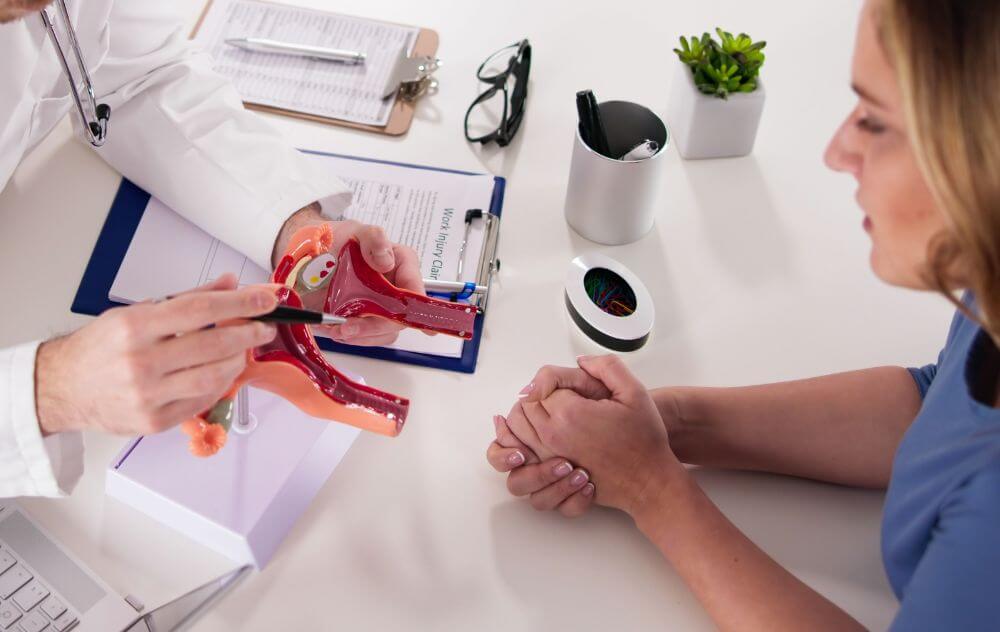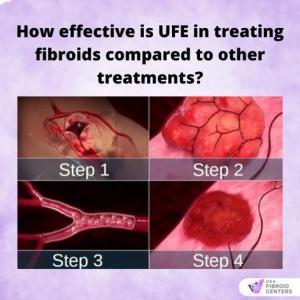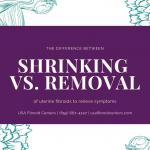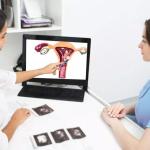
Do You Want To Learn More About How Successful UFE Is?
Imagine this: no more fibroid pain, missed work, or special occasions – instead, just you living your best life. That’s a reality for thousands of women, thanks to UFE. Interested? Read on.
Uterine fibroid embolization (UFE), a non-surgical and minimally invasive procedure that shrinks fibroids, is regarded as a highly effective treatment for uterine fibroid symptoms. In this blog, we will answer these questions:
- Fibroid Embolization Success Rate
- How Do I Know If I Have Uterine Fibroids?
- What Happens to Fibroids During and After UFE?
- Why More Women Choose UFE
- Is Uterine Fibroid Embolization Right For You?
Uterine fibroid embolization (UFE), a non-surgical and minimally invasive procedure that shrinks fibroids, is regarded as an effective treatment for uterine fibroid symptoms. How successful is UFE? At USA Fibroid Centers, we have a 90+ percent success rate.
If you have uterine fibroids and feel like the symptoms are taking over your life, it may be time to look into treatment. You may have been told that surgery is your only option, but this is rarely true. The fibroid embolization success rate means that it effectively treats most women’s painful symptoms, and the procedure is much less invasive than surgery. If you’re considering fibroid treatment, consult a specialist to ensure you understand your options.
Fibroid Embolization Success Rate
Our fibroid embolization success rate means most of our patients who undergo the treatment report a reduction in symptoms, including the following:
- Shorter, lighter periods
- Regular menstrual cycles
- Resolution of anemia
- Less pain during intercourse, if any
- Normal urination and bowel movements
- Less bloating, if any
- Improved pelvic and back pain, if any
- Fewer menstrual cramps, if any
- Abdominal area returning to normal size
Resolution of fibroid symptoms can reduce stress and anxiety, improve body image and raise self-esteem. Most of our patients start experiencing reduced symptoms within six months and do not experience any fibroid symptoms even for five years after treatment, which means they need not undergo additional UFE treatments or fibroid surgery.
How Do I Know If I Have Uterine Fibroids?
Uterine fibroids are a common health condition during the reproductive years, affecting up to 70 percent of women at some point in their lifetime. Although fibroids are not always problematic, 30 percent of women with fibroids experience painful and unpleasant symptoms. Severe fibroid symptoms can have a significant impact on one’s quality of life.
Common fibroid symptoms include:
- Heavy and prolonged periods
- Pain during intercourse
- Frequent urination
- Constipation
- Bloating
- Pain in your pelvis or lower back
- Severe menstrual cramps
- Visible stomach bulge
If you experience fibroid symptoms, it is important to undergo a medical evaluation. Not only can fibroids lead to significant pain and discomfort, but they can also cause damage to surrounding organs, including the bladder and bowel. In some cases, fibroids can also impact fertility.
Symptoms of fibroids can be similar to those of other health conditions, including ENDOMETRIOSIS and ADENOMYOSIS. Medical imaging, such as an ultrasound or MRI provides an accurate diagnosis. Understanding the cause of your symptoms will allow you to find treatment and feel better. Our Symptom Quiz can give you an idea of whether your symptoms may be related to uterine fibroids.
What Happens to Fibroids During and After UFE?
We use fibroid mapping (ultrasound technology) to see how many fibroids need to be treated and which arteries they are connected to. This enables us to treat all fibroids simultaneously. Small embolic particles are injected into the artery through a catheter. The particles prevent blood from reaching the fibroids, causing starvation and shrinkage of the fibroids. Unlike other surgical procedures, the fibroid remains in the body.
Because the fibroid is starved of blood, it begins to soften and shrink over several months. Any dead fibroid tissue is naturally absorbed by the body. During this shrinking process, the patient may experience cramping, mild nausea, slight bleeding between periods, or even skip a period. This is normal and all part of the process.
While this process can take up to six months, most women experience a 90-percent reduction in symptoms and many report notable improvement within three months.
The embolic particles remain permanently at the fibroid site in the blood vessels. so, it is unlikely new fibroids will develop. UFE treats the fibroids. The uterus, ovaries, and fallopian tubes are left intact.
Consult our fibroid specialists for more information about UFE treatment and a personal assessment.
Why More Women Choose UFE

The uterine fibroid embolization success rate is impressive, and its benefits are numerous. One of the most important one is that uterine fibroid embolization can help you avoid surgeries like a hysterectomy (the complete surgical removal of the uterus) and myomectomy (the surgical removal of individual fibroids from the uterus).

UFE offers the following advantages over surgery:
- Minimally invasive: Fibroid embolization is a minimally invasive approach to fibroid treatment, allowing faster recovery and a much lower risk of complications than surgery.
- Less pain: Pain after UFE is often compared to menstrual cramps. Many women can manage post-UFE pain with only over-the-counter pain medications. Prescription pain relievers are usually required after fibroid surgery.
- Improves symptoms: Most women report a reduction or elimination of symptoms within a few months of UFE treatment.
- Low risk: UFE involves fewer risks than fibroid surgery. Common surgical risks include excessive bleeding, infection, blood clots, and an adverse reaction to general anesthesia. Surgery can also cause damage to surrounding organs and structures.
- Less costly: Non-surgical fibroid treatment costs less than fibroid surgery, and UFE is covered by most major health insurance plans. We can help you navigate your plan’s coverage details.
- No hospital stay: UFE is usually performed in outpatient treatment centers. You can return to the comfort of your home on the same day as your treatment.
- No general anesthesia: Uterine fibroid embolization is performed under light sedation.
- No stitches or scarring: Since UFE does not involve surgical incisions, you will not require stitches or develop scarring. We will send you home with only a small bandage to cover the catheter’s tiny entry point.
- Short recovery time: Most women resume their normal daily activities within one to two weeks of fibroid embolization. For comparison, a hysterectomy recovery takes six to eight weeks.
- Preserves the uterus: If you wish to become pregnant after fibroid treatment, discuss your plans with a fibroid specialist before making any treatment decisions. UFE may be the best option since it leaves the uterus intact, preserving fertility. Many women have had successful pregnancies after UFE.
To discuss the benefits of uterine fibroid embolization, talk to an expert. Our leading fibroid specialists can quickly evaluate your fibroids to determine whether you are a good candidate for UFE.
Is Uterine Fibroid Embolization Right For You?

If you wonder whether fibroid embolization is right for you, answer the following questions:
- Are fibroid symptoms regularly disrupting your life?
- Do you wish to avoid surgery?
- Would you like to become pregnant in the future?
- How much time can you take off to recover from fibroid treatment?
Our competent and experienced doctors can help you explore your options and determine whether UFE would be a worthwhile approach for you.
Schedule a Consultation With Uterine Fibroid Experts
At USA Fibroid Centers, we empower women with fibroids to make the best decision for them on all available treatment options. Many women opt to have uterine fibroid embolization instead of more invasive options based on its proven success rate. Non-surgical, office-based UFE treatment can shrink fibroids, alleviate challenging symptoms, and help get patients back to enjoying life without pain. Compared to fibroid surgery, the UFE procedure involves fewer risks, less pain, and a shorter recovery time while keeping the uterus intact.
To learn more about fibroid treatments and our fibroid embolization success rates, call us at 855.615.2555 or schedule an initial consultation online. For your convenience, we also offer virtual doctor visits.




